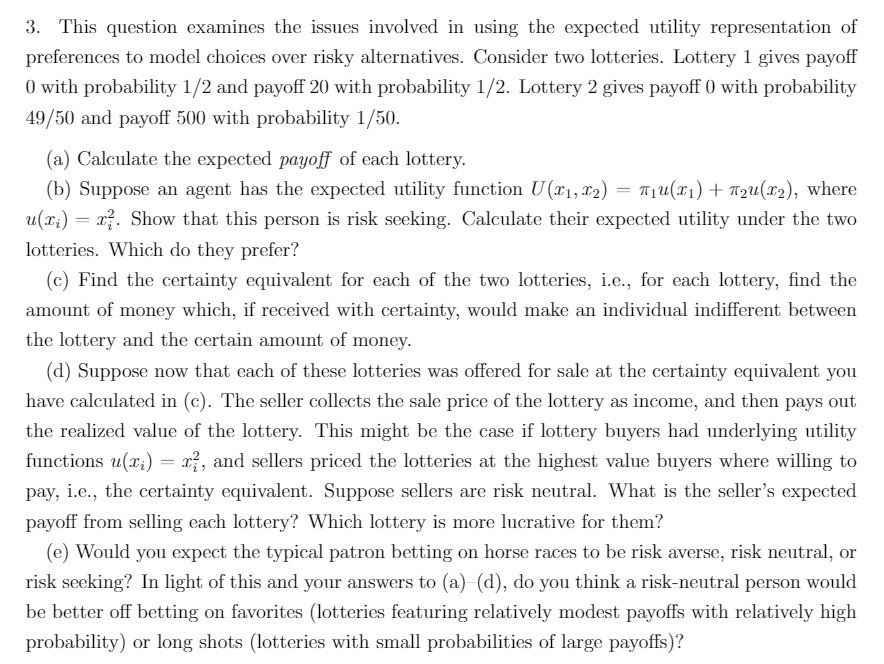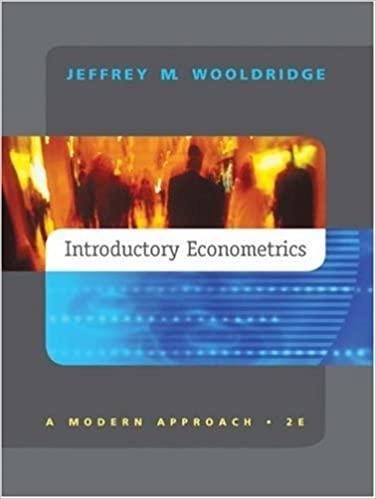Answered step by step
Verified Expert Solution
Question
1 Approved Answer
3. This question examines the issues involved in using the expected utility representation of preferences to model choices over risky alternatives. Consider two lotteries. Lottery


Step by Step Solution
There are 3 Steps involved in it
Step: 1

Get Instant Access to Expert-Tailored Solutions
See step-by-step solutions with expert insights and AI powered tools for academic success
Step: 2

Step: 3

Ace Your Homework with AI
Get the answers you need in no time with our AI-driven, step-by-step assistance
Get Started


